10 Best PPC Advertising Platforms for Digital Marketing Success
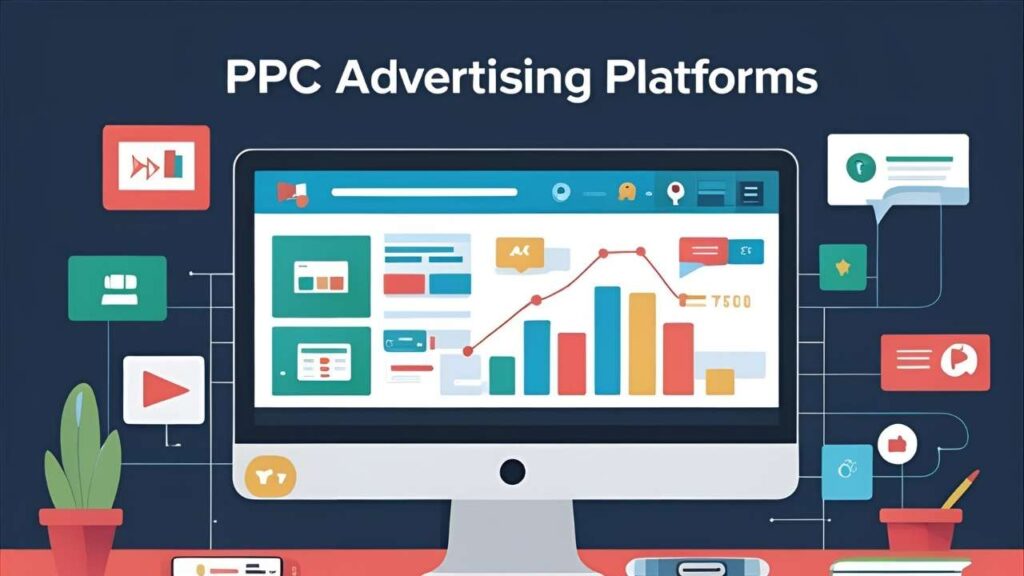
In the modern competitive digital age, firms are always interested in the best methods of approaching their target markets and achieving conversions. Pay-per-click ads have become one of the most effective marketing campaign strategies in place. Given the wide choice of PPC advertising platforms on the market, your choice of platform can greatly affect the success and or success on your campaign as well as the cost returns.
All platforms have their peculiar benefits, targeting capabilities, and demographic audience that can assist the business to attain its marketing goals. The key learning here is that it is important to be aware of the strengths and weaknesses of various platforms so as to achieve a holistic approach towards a digital marketing strategy and make the incumbent advertising resources count towards an admirable result.
What is PPC Advertising?
Pay-per-click (PPC) is a web-based advertisement scheme in which the publishers pay a charge every time a user taps on an advertisement. It is a cheaper method that enables businesses to purchase visits to their websites instead of trying to achieve them through search engine optimization. PPC ad mediums are used to mediate between advertisers and potential consumers on different online platforms such as search engines, social networks, and even on display networks.
The elegance of PPC is that it is instant, and results can be measured, which can push businesses to be able to launch campaigns fast and measure results in real-time. Advanced targeting capabilities within PPC advertising services will enable advertisers to target a suitable demographic, interests, locality, and behavior to ensure that the ads achieve maximum output.
Why PPC Advertising Platforms Are Important
The environment of digital advertising has changed significantly, and now the development of such a dedicated platform becomes necessary to enable businesses to promote their presence and reach the maximum number of customers online. These platforms present the infrastructure, tools, as well as access to the audience, which make it possible to execute a successful campaign.
- Immediate Exposure: PPC advertising platforms will be seen instantly, regardless of organic rankings in search engines and social media news feeds.
- Accurate Targeting: The availability of excellent demographic, geographical, and behavioral targeting capabilities ensures that the ads receive the maximum coverage to the most relevant prospective clients.
- ROI that can be measured: With good analytics and conversion tracking features, marketers can accurately figure out the exact ROI on advertising.
- Budget Control: The dynamic approaches to bidding and the daily budget cap allow the firms to control their spending on the advertisements in line with their financial means.
- Competitive Advantage: Availability of priced placements and exclusive targeting options enables a business to have a competitive advantage over other businesses within the digital arenas.
Limitations to Look for in PPC Advertising Platforms
Although PPC advertising is highly rewarding, it is important to know the various disadvantages that might arise when doing it, so that these are considered when making a platform choice. Unique challenges on different platforms may affect the performance of the campaign and the efficiency of the budget.
- Niche Keyword: Unpopular keywords and ideal ad locations are usually attained at high costs and low profitability margins.
- Learning Curve: The interface of complex platforms and advanced functions is time-consuming to serve well and efficiently.
- Ad Fatigue: The tendency to encounter the situation when customers become less responsive to frequent advertisements, due to the rising customer acquisition costs.
- Platform Dependency: Excessive dependence on specific platforms induces the risks of becoming predisposed to policy changes, algorithm updates, and the danger of having accounts suspended.
- Quality score factors: Relevance, landing page quality, and click-through rates on the ad. Search platforms consider relevance, landing page quality, as well as click-through rates that influence the overall campaign costs.
Comparison Table for PPC Advertising Platforms
| Platform | Rating | Best Feature |
| Microsoft Ads | 4.2/5 | Lower competition costs |
| Facebook Ads | 4.5/5 | Advanced audience targeting |
| Google Ads | 4.7/5 | Massive search network reach |
| LinkedIn Ads | 4.1/5 | Professional audience targeting |
| Amazon Ads | 4.3/5 | High-intent shopping traffic |
| Instagram Ads | 4.4/5 | Visual content engagement |
| TikTok Business | 4.0/5 | Young demographic reach |
| YouTube Ads | 4.3/5 | Video content marketing |
| Pinterest Ads | 3.9/5 | Lifestyle niche targeting |
| Twitter Ads | 3.8/5 | Real-time engagement opportunities |
10 Best PPC Advertising Platforms
1. Microsoft Ads (Bing Ads)
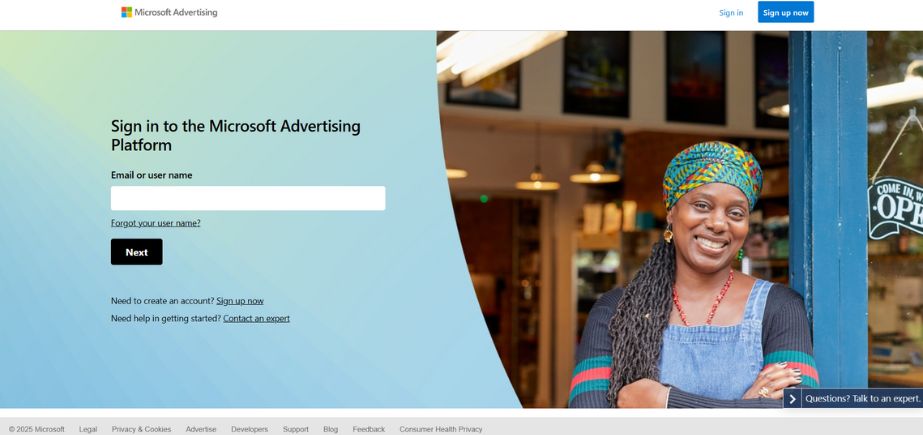
Rating: 4.2/5
Website: https://ads.microsoft.com
Best Use Cases: B2B campaigns targeting mature demographics and professional audiences
Microsoft Ads remains an effective tool when an advertiser wants to target people outside of the Google network. Having a considerable percentage of the market share among its audiences who are 50 years old and more, there are distinct opportunities provided to businesses that would target the mature audiences.
The integration of the platform with the Bing search engine and the Yahoo network means millions of searches per day, with generally low competition levels compared to Google Ads. Microsoft Ads is effective in providing an affordable performance to businesses that deal in professional services, healthcare, finance, and B2B.
Advanced targeting that is available on the platform involves demographic filters, geographic targeting, and campaign-specific targeting that allows increasing the efficiency of ad spend.
Key Features:
- Dynamic search advertising
- Mobile campaign optimization
- Audience targeting tools
- Conversion tracking capabilities
- Automated bidding strategies
Pros:
- Lower competition costs
- Quality audience demographics
- Professional user base
Cons:
- Smaller audience reach
- Limited mobile usage
- Platform complexity issues
Pricing: $1.54
2. Facebook Ads
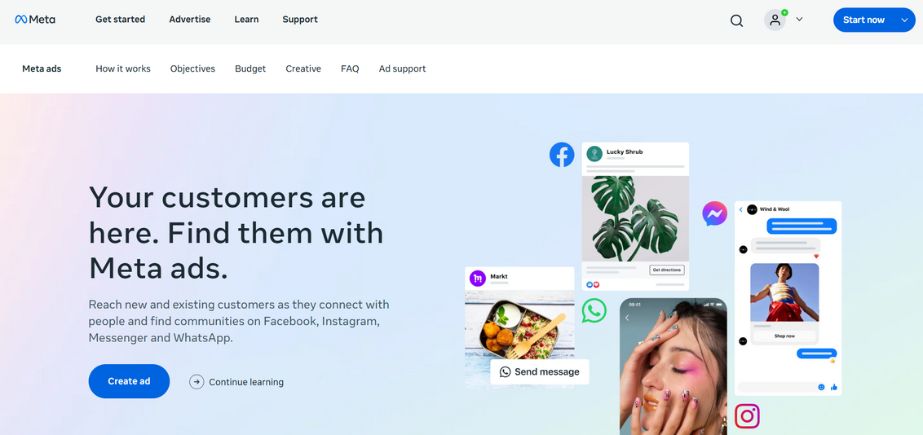
Rating: 4.5/5
Website: https://www.facebook.com/business/ads
Best Use Cases: B2C marketing, brand awareness, and local business promotion campaigns
Facebook Ads is still among the most useful social media advertisement sites, generating about 115 billion in advertising revenue. The power of the platform is the availability of unrivaled user information and advanced targeting with opportunities to reach a particular demographic, interests, and behaviors.
There are numerous placement solutions, such as News Feed, Marketplace, Groups, and Messenger, to offer businesses a chance of developing their multipronged campaign approach, touching on all touchpoints within users.
The professional analytics on Facebook will give insight into the campaign performance, reach, exposure, and conversion tracking. The platform is brilliant when the company would like to attain brand awareness, traffic on its site and leads on the social platform.
Key Features:
- Advanced audience targeting
- Multiple ad placements
- Carousel ad formats
- Lead generation forms
- Conversion optimization tools
Pros:
- Sophisticated targeting options
- Cost-effective advertising
- Comprehensive analytics platform
Cons:
- Increasing competition rates
- Privacy policy restrictions
- Algorithm dependency issues
Pricing: as low as ₹84
3. Google Ads
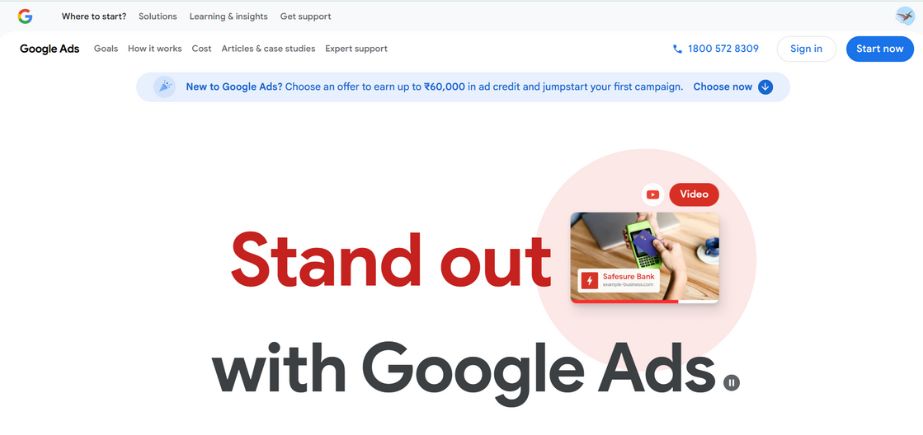
Rating: 4.7/5
Website: https://ads.google.com
Best Use Cases: Search marketing, display advertising, and comprehensive digital marketing campaigns
The market share of 28 percent and exposure to the largest search network in the world give Google Ads a commanding position in the PPC advertising market. The audience reach is of the kind that could not be matched with the search results, display network partnerships, Google search, and YouTube and mobile advertising tools that the platform provides.
Sophisticated machine learning algorithms also aid the optimization of campaigns automatically, and keyword research tools are rather extensive to allow advertisers to discover high-value search terms. The advantage here is that the platform is capable of capturing the intent of the users during the time of searching, and therefore, is ideal for driving immediate conversions.
Google Ads offers extensive coveragesuch as Search, Display, Shopping, Video, and App promotion campaigns, which support various types of marketing goals and business patterns.
Key Features:
- Massive search network
- Display advertising options
- YouTube video campaigns
- Mobile-specific targeting
- Shopping campaign integration
Pros:
- Largest audience reach
- High-intent traffic
- Advanced optimization tools
Cons:
- High competition costs
- Complex platform navigation
- Steep learning curve
Pricing: Custom
4. LinkedIn Ads
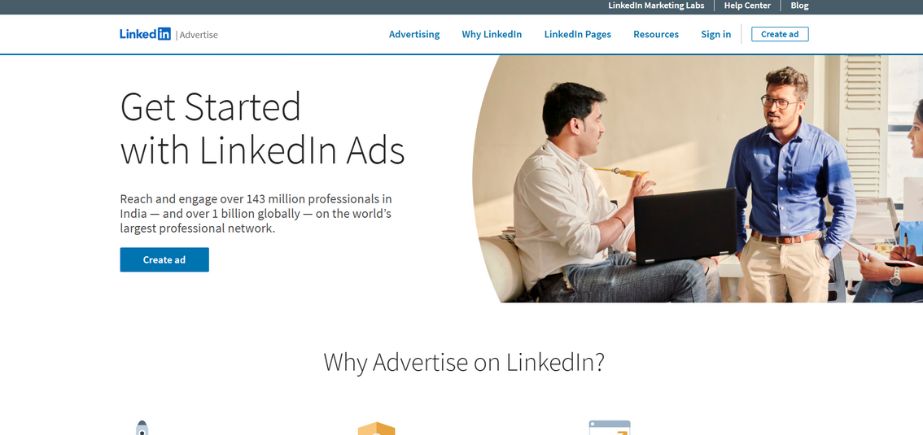
Rating: 4.1/5
Website: https://business.linkedin.com/marketing-solutions
Best Use Cases: B2B marketing, professional services, and executive decision-maker targeting
LinkedIn Ads offers access to professional audiences and decision-makers at an unprecedented scale across all industries on a global basis. The platform has around 875 million users, and it has special targeting capabilities available by job title, company size, industry sector, and professional interests.
LinkedIn is an effective choice for B2B companies that want to establish some traction with high-level executives, quality leads, and professional brand awareness. The sponsored content on the platform, ads sent through messages, and the dynamic advertisement styles ensure that businesses reach professionals in the natural working environment.
LinkedIn offers the lead generation forms and conversion track features that could allow measuring the ROI and effectiveness of the campaigns employed by the professional service providers and enterprise software companies.
Key Features:
- Professional audience targeting
- Lead generation forms
- Sponsored messaging options
- Dynamic ad formats
- Account-based marketing tools
Pros:
- Decision-maker audience access
- Professional targeting precision
- High-quality lead generation
Cons:
- Premium pricing structure
- Limited audience size
- Professional content restrictions
Pricing: $2.00 to $3.00
5. Amazon Ads
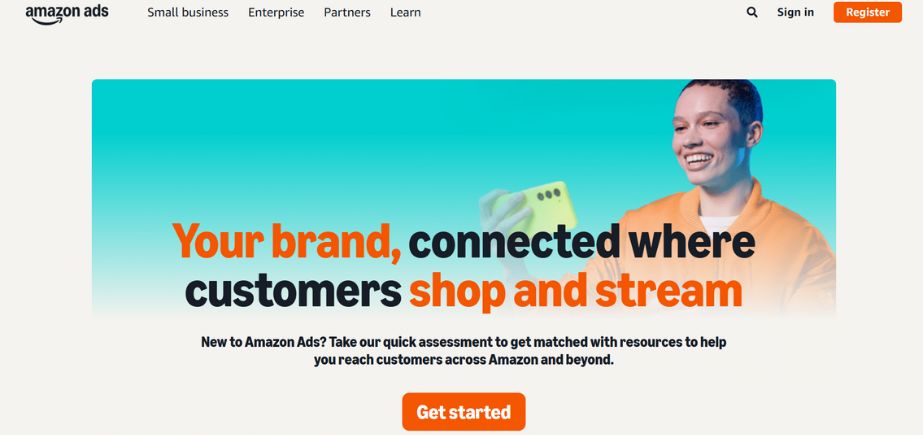
Rating: 4.3/5
Website: https://advertising.amazon.com
Best Use Cases: E-commerce product promotion, retail marketing, and shopping campaign optimization
Amazon Ads have experienced spectacular growth as the means of targeting the most-purchasing intention e-commerce customers. The benefit of this platform is that it reaches consumers who are already in the purchase mode and a high conversion rate is quite easy to realize relative to the other types of advertisement.
Amazon offers various placements which are applicable in advertising including the search results, the product detail pages, featured on the home page and through integration on third party websites. The targeting and keyword matching capabilities of the platform are advanced and will guide the sellers and brands to ensure their products are made the most visible.
Amazon Ads are especially effective when it comes to businesses that sell physical goods, the companies that have their labels, and companies that want to gain market share within a certain product category where the competition is strong.
Key Features:
- Product-focused advertising
- Shopping intent targeting
- Sponsored product campaigns
- Display advertising options
- Third-party placement network
Pros:
- High-intent shopping traffic
- Strong conversion rates
- Product-specific targeting capabilities
Cons:
- Limited to commerce
- Increasing competition costs
- Platform policy restrictions
Pricing: as low as $0.35
6. Instagram Ads
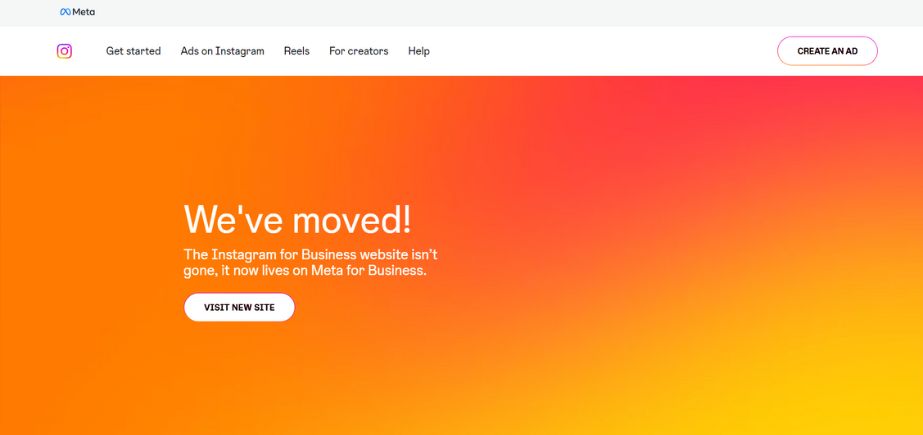
Rating: 4.4/5
Website: https://business.instagram.com/advertising
Best Use Cases: Visual brand marketing, lifestyle products, and millennial audience engagement
Instagram Ads can activate the imagery-first quality of the social media to help organizations demonstrate how their items must appear and can cause them to create brand awareness among the youths. Instagram has more than 1.44 billion active users, which gives the companies working in fashion, lifestyle, fitness, and consumer goods industries an outstanding reach.
The strong feature of the platform is its captivating formats of visual content, such as photo advertisements, video content, carousel presentations, and Stories advertising. The ability of Instagram and Facebook to connect to the advertising business of Facebook gives the opportunity to use advanced targeting settings and specific analytics.
It is most outstanding when businesses aim to establish a brand identity, display the attractiveness of their products, and compromise with the millennial and Gen Z audiences through convincing visual storytelling.
Key Features:
- Visual content formats
- Stories advertising options
- IGTV promotion capabilities
- Mobile-optimized campaigns
- Influencer collaboration tools
Pros:
- High engagement rates
- Visual content focus
- Young demographic reach
Cons:
- Limited text options
- High creative demands
- Platform algorithm changes
Pricing: $0.40-$0.70
7. TikTok for Business
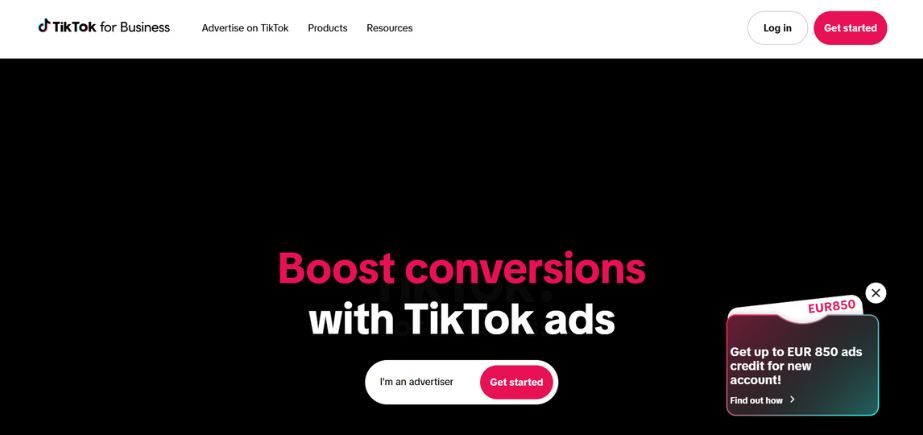
Rating: 4.0/5
Website: https://www.tiktok.com/business
Best Use Cases: Creative brand campaigns
TikTok is the most used social advertising platform which has over 1billion active users in more than 150+ countries. The platform has its unique algorithm as well as engaging video content in the short format that provides unique possibilities to use viral marketing and brand awareness measures.
The potential of TikTok can be explained by its capacity to produce a genuine user engagement with creative and entertaining content that appeals to the younger generation. The most innovative ad formats provided on the platform are in-feed videos, branded challenges, and interactive filters that make users interact with them.
TikTok works perfectly when there is a need to drive brand awareness efforts and facilitate viral marketing campaigns among Gen Z consumers, and promote products using imaginative storytelling styles.
Key Features:
- Short-form video content
- Branded hashtag challenges
- Interactive filter options
- “For You” page placement
- Creative collaboration tools
Pros:
- Viral marketing potential
- Young audience engagement
- Creative content opportunities
Cons:
- Limited targeting options
- Content creation demands
- Platform policy uncertainties
Pricing: $500
8. YouTube Ads
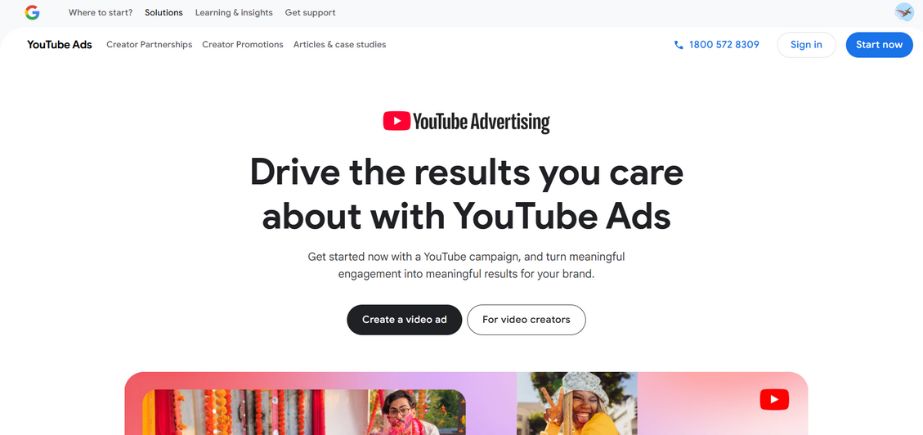
Rating: 4.3/5
Website: https://ads.youtube.com
Best Use Cases: Video marketing, brand storytelling, and educational content promotion
YouTube Ads gives an opportunity to reach the second largest search engine and the leading video-content platform in the world. YouTube is an excellent platform with more than 368.7 million users between the ages of 18 and 24, and this is sufficient to influence more people with a brand using video content.
Various ad formats offered on the platform are skippable and non-skippable in-stream advertising, video discovery promotion, and Bumper campaigns that can be used depending on the marketing goals. As YouTube has been incorporated into the Google Ads ecosystem, it allows the targeting of consumers with advanced options relating to demographics, interests, keywords, and their viewing habits.
The platform is great when a business is keen on telling brand stories, demonstrating products, content marketing that revolves around education, a nd, more importantly, creating long-lasting relationships with customers with the use of engaging videos.
Key Features:
- Multiple video formats
- In-stream advertising options
- Discovery ad placements
- Mobile-optimized campaigns
- Advanced targeting capabilities
Pros:
- Massive video audience
- Engaging content format
- Google ecosystem integration
Cons:
- Video production costs
- Skip rate challenges
- Competition for attention
Pricing: $0.10 to $0.30 per view or action
9. Pinterest Ads
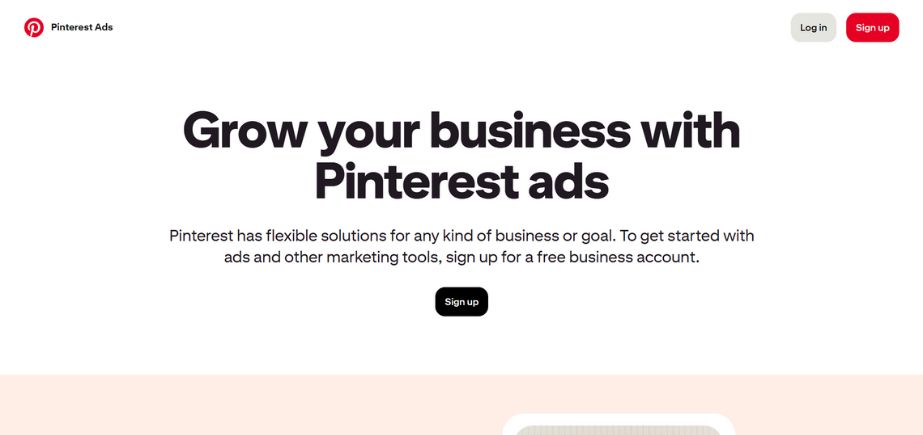
Rating: 3.9/5
Website: https://business.pinterest.com/advertise
Best Use Cases: Lifestyle marketing, DIY projects, and female demographic targeting
Pinterest Ads present distinctive advertising possibilities in case a company is interested in reaching a lifestyle audience, especially women who need ideas to plan home, fashion, and other projects. Pinterest has 431 million active users, thereby operating as a visual discovery platform, where the participants are in a hunting mood regarding their ideas and products.
The advantage of the platform is characterized by its high-intent traffic since individuals use Pinterest to plan purchases and to identify new products. Pinterest advertisements are incorporated through organic search and by way of pin proposals, which offer natural consumer experiences.
The platform is an excellent platform to advertise a business in the home decor, fashion, food, travel, and wedding industries that have the desire to reach users when they are planning or gathering inspiration.
Key Features:
- Visual discovery advertising
- Shopping campaign integration
- Carousel ad formats
- Organic search placement
- Interest-based targeting options
Pros:
- High-intent user behavior
- Visual product showcase
- Long content lifespan
Cons:
- Limited audience reach
- Niche platform focus
- Gender demographic skew
Pricing: $0.10 to $1.50 per click, or $2 to $5 per 1,000 impressions
10. Twitter Ads
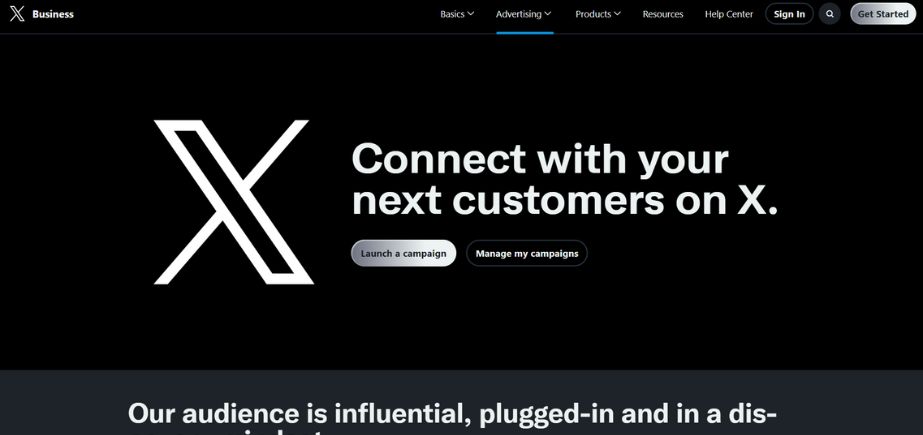
Rating: 3.8/5
Website: https://ads.twitter.com
Best Use Cases: Real-time marketing, news promotion, and B2B technology campaigns
Twitter Ads offer 450 million active users who want to know the current information, new news, and matters about the industry. It is the characteristic of the platform to be influential within the sphere of thought leaders, journalists, and industry professionals due to its capacity to provide immediate communication.
Advertising options on Twitter are promoted photos and videos, promoted trends, promoted tweets, and promoted accounts that help companies become a part of the right conversation and make a business visible. This site is ideal in the case of B2B corporations, technology brands, media firms, and enterprises aiming to become a thought leader in their sectors.
The live experience of Twitter has made it a perfect fit when marketing an event, during a crisis, for customer service, and to run current or time-sensitive promotions based on current trends and what is happening in the world.
Key Features:
- Real-time content promotion
- Trend-based advertising
- Promoted account options
- Feed-based placements
- Conversation targeting capabilities
Pros:
- Real-time engagement opportunities
- Influential user base
- Cost-effective advertising rates
Cons:
- Limited visual options
- Declining user growth
- Character count restrictions
Pricing: $0.50 to $2.00
How to Choose the Right PPC Advertising Platforms
When choosing the most appropriate advertising medium, they should thoroughly contemplate various factors that should meet their business goals and the nature of their target audience. The process should be strategic-based using data in a manner that will enhance the best use of the information provided in the campaign.
- Audience: It is necessary to conduct research about the platforms that a certain target demographic enjoys using, the way they receive the information, and the means that they interact with to ensure that your advertising messages and the purpose of the campaign will be achieved in a noticeable way.
- Budget: Take into account the structure of any platforms in terms of prices and minimum spending to develop resources when addressing various modes of advertising sources and types of campaigns without losing profit.
- Goals: Set specific objectives of your campaigns into awareness, generation leads, or conversion of sales to help you choose the necessary platform that best suits your desired campaign goals, depending on its available features and channels that you can target.
- Industry: Look at how the platform will be effective in your industry of interest where competitions, suitability of audience, and the platform regulations will be discussed and this may adjust your style and content of advertising.
- Resources: Assess the capabilities of your workforce, the creation of contents, and time budget so that you can run the campaigns effectively on different platforms without affecting the quality and the performance of your advertising programmes.
Conclusion
PPC advertising environment is a field that is dynamic and stable and has provided businesses with unrivaled opportunity to reach their respective target audiences precisely and efficiently. To succeed in digital advertising, it is important to know the peculiarities of every platform, its advantages and drawbacks, and its consumers to be able to create an in-depth marketing approach to succeed in digital advertising.
While Google Ads is still the number one search marketing, and Facebook is still the most effective platform for social targeting, newer platforms, like Tik Tok will appeal to specific demographic targets.
The best strategy to ensure that advertising dollars used on PPC advertising platforms are maximized is to ensure that a variety of channels are tested, and perform data is analyzed, and then optimization is carried out based on real-world performance.
As behavior among consumers changes and more technologies are introduced to the market, companies have to be flexible and strategic in their platform choice to gain competitive advantages and ensure sustainable growth by using their pay-per-click advertising investment properly.
Frequently Asked Questions
Q: Which are the most profitable PPC advertising platforms of choice for the small business?
A: Facebook Ads and its Microsoft counterparts should commonly give a great ROI to small businesses, as there is less competition cost and advanced targeting capabilities that end up making money out of a humble budget.
Q: What is the key to understanding the proper distribution of the budget on several PPC advertising platforms?
A: Begin with 60 percent of the budget with solid performers such as Google Ads and reserve 40 percent to test a platform such as Facebook, LinkedIn, or industry-specific networks, depending on the audience data of your niche.
Q: Which key indicators should be followed on various PPC advertising platforms?
A: Profitability of each campaign on any platform needs to be measured through its cost per acquisition, conversion rate, click-through rate, and return on ad spend.
Q: Am I able to run an identical campaign on several PPC advertising platforms at once?
A: Yes, because every platform needs its ad formats, targeting criteria, and message strategies to make the best of various audience behaviors and features of particular platforms.
Q: How do I review and modify my PPC advertising platforms strategy?
A: Reflect on the performance of the platforms monthly, make tactical changes on a weekly frequency, and perform an overall strategy evaluation every quarter so that the campaign can be run optimally and within the budget.